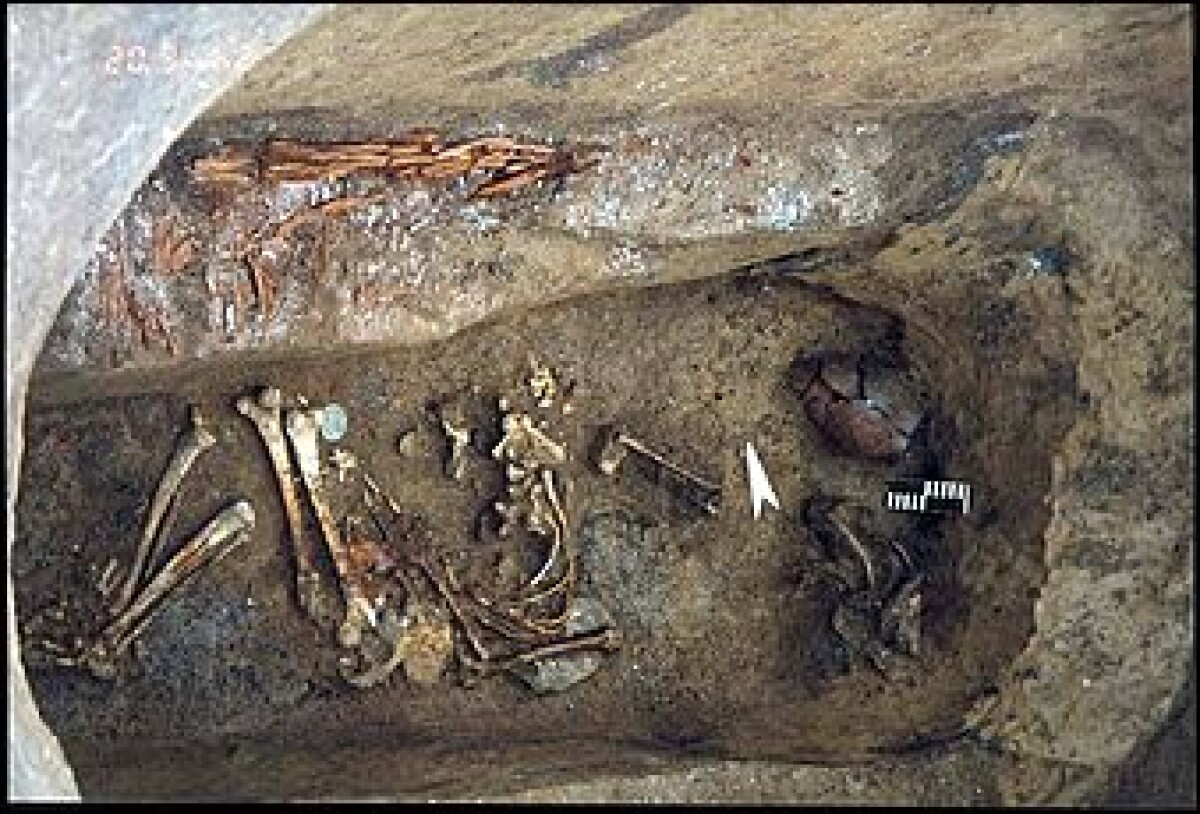
With emergence of Indo-European problems, the question about defining the terminology “tradition of burial” brought particular interest. At the beginning of the 2nd millennium BC, due to climate change, in order to find a convenient place for future life, arias started moving to new locations. If some are located in Europe, the rest of the people moved to India and Iran. At the 2nd millennium BC, In Eastern Europe, Western Siberia and Kazakhstan Aryan tribes stood out among others, referring to the historical and cultural group that created the Andronovo culture [1. 110 p.].
In the matter of the definition of "burial traditions," the researchers had no common opinion. One group of researchers believe that the tradition of burial is the order of the graves, skeleton bones and things, and the rest, for example, a researcher V. Petruhin believed that burial traditions is when relatives of the deceased during the funeral, near the grave of performing certain actions. Perhaps, their opinion is more correct, but in this case to explore the beginning and end of the tradition of burial is not possible [2. With 47-49 p.].
In ancient times burial had two types: inhumation of deceased in Paleolithic and cremation of dead bodies in the Bronze Age. It's so different burial traditions that bring them into one system will be very difficult. If archaeological materials do not provide a complete reflection of these traditions, then ethnographic material is very rich in examples of support in the last journey of the deceased person.
French ethnographer George Montandon for the first time tried to make the classification of the oldest methods of burial. He shared the main methods into eight groups: 1) remain or discard; 2) burial at sea; 3) burial in a deserted place; 4) burying the corpse in the ground or burial in caves; 5) cremation; 6) mummification; 7) dismemberment; 8) cannibalism. It is difficult to explain the full meaning of a particular historical process. For example, why some tribes buried their deceased in the extended form, while others are in a bent form, why a corpse could be find in a sitting and standing position.
All buried found in Andronovo burials, directed to the west and south-east. This is due unification in the afterlife. People of Andronovo tribes believed that the four sides of each layer has its own God, as they believed that the God in the west - the God of darkness and darkness. They believed that making the fence at the tomb, they create a “house of the dead”, guard the graves on all sides meant hearth of this “home”. The few days after inhumation and cremation made of stone fence, so they shared the world of the dead from the living. Cemetery which fenced by a stone wall sometimes were in the form of a quadrangle or in the form of a circle.
Fencing on the graves can have a lot of meaning. These paintings are mainly found in the burial traditions of the Bronze Age. In the first case, the soldiers in order to "protect" the graves of the main master (or servants to "serve" his master), buried around the tomb of the master. In the second case, personal belongings were buried near his grave leader or near the place of sacrifice. Graves of men, women and children are located in a certain place. If we look at the burial, located in the same repository, we can see that they are from the same tribe. If graves are located in the same order, we can also determine that they are from the same tribe. Sometimes burial in a tomb compared to planning rural tribes.
Since these cemeteries have people buried at different times and in special vertical positions, their chronology is important for stratigraphic control. It is important not only build the cemetery, but also which materials were used in building. Excavations led by N.Merperta, which took place near Yagodnoe village, can be used as an example.
V. Pertruhin provided interesting examples of ancient discoveries of semantics of ideological traits that described by Ibn Fadlan, comparing the Russian burial methods and actions that were committed there. Most importantly, the researchers are interested in are the actions that have been played over the grave. Such observation of Petrukhin can become one of the most important researches. Along with this, the burial traditions of nomads, which were researched by G.Fedorov-Davydov, is one of the important things. Even though that things of nomads were similar, through the analysis it was possible to distinguish between tradition burial Pechenegs (Patzinaks) and Cumans Turks. [2. b 47-49.].
M. Kadyrbayev, through his materials about fences of stoned mounds, made logical conclusions. He came to conclusion that despite the thrown remnants of bridles found near the horses, it can be said that the robbery was done sometime after burial. Kadyrbayev noted, that after the loss of whole gold from cemetery, shows that with the developing of the division of property, at the same time ownership had been evolved.
(B.Kaliyev and M.Malibekov)
(North Kazakhstan State University named after M.Kozybayev)
